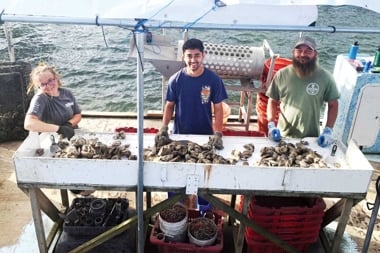Growing Your Own Herb Garden
North American pioneers planted herb gardens for many purposes. They used herbs for seasoning, healing, freshening of linen closets and dyeing of homespun fabrics. Botanically, herbs are plants that do not produce woody stems and that die down to their roots every year. Both annual and perennial varieties exist.
North American pioneers planted herb gardens for many purposes. They used herbs for seasoning, healing, freshening of linen closets and dyeing of homespun fabrics. Botanically, herbs are plants that do not produce woody stems and that die down to their roots every year. Both annual and perennial varieties exist. (Annual plants have to be replanted or reseeded every year; perennial plants can live for many years.) If herbs are grown in a garden, it is best to plant these two varieties in different areas or to put perennials in the garden and annuals in containers. Most common herbs need similar growing conditions.
Gardening Basics
Light
With a few exceptions, herbs love a location with plenty of light. Only in herbs that receive six to eight hours of full sunlight a day can precious essential oils fully develop (count the hours on the days that the sun actually comes out). Essential oils enhance both the flavor and the medicinal properties of the plants. While herbs can survive in light shade, their growth and quality will be adversely affected.
Wind
Like most sun-loving plants, herbs are susceptible to drafts and high winds. They should not be grown on balconies of highrise buildings unless they are kept close to protective walls. In your garden, plant them in sheltered areas close to a wall, a fence or some shrubs.
Pollution
Herbs should not be grown (or collected) close to busy traffic because they absorb toxins, making them unfit for use, internally or externally.
Soil
Herbs do not need particularly fertile soil to grow. In fact, if the soil is too rich, excess leaves will develop, spoiling the flavor. Herbaceous plants grow best when organic matter (compost) is added to the soil. Even plants that prefer poor soil will do well with compost. Make sure that the soil is neither too acidic nor too alkaline. The pH balance should be between 6.5 and 7.0. To prepare the garden site for the first time, cultivate the soil to a depth of twelve to eighteen inches (18-27 cm). If there is only a shallow layer of topsoil, remove it before breaking up the subsoil. Add peat moss and compost to the subsoil, and then put back the topsoil, which should also be mixed with organic matter. If drainage is poor, a drainage layer should be laid under the subsoil.
Drainage
When growing herbs, providing good drainage is important because these plants hate to get "wet feet" even though a few herbs, such as angelica, lovage and mint, like a fairly moist environment. To prepare herb beds, the soil should be mixed well with peat moss for retention of moisture. If the soil is not naturally well-drained, or if herbs are grown in raised beds and containers, a drainage layer of sand, pebbles and/or broken shards should first be laid down. If you want to go into major herb production, laying down underground drain tiles would be advantageous. Existing herb beds with poor drainage can be helped by digging a small drainage trench around plants.
Propagation
Seeds
Many herbs can be grown from seeds. The smaller the seeds, the longer they take to develop. The earliest seeds should be sown in indoor flats in February. They should be very lightly covered with soil to a depth of twice their diameter. Flats should be put in a sunny window and kept at a cool temperature for good development. When plants have grown a second set of leaves, transplant them into individual pots so they develop good root systems. After the danger of frost has passed, transplant potted herbs into the garden or outside containers. A few plants, such as anise, coriander, dill and fennel, do not transplant well and should be sown directly into the garden after the earth is starting to warm up and all danger of frost has passed. Seeds sown in the garden should be kept moist at all times. The seeded area is best covered with a piece of glass for a hothouse effect. The glass is removed when the seeds start to germinate. To protect young growth from birds and snails, the ground can be covered with small branches until plants have developed two sets of leaves. Plants can then be moved to other garden spots.
Cuttings
Herbs can also be propagated from cuttings. At any time from late spring well into summer, cuttings can be taken from well-established, healthy herbs. It is best to take the fresh growth from plant tips. Cut just below a node to a length of three to five inches (4.5-7.5 cm). Dip the cut ends in rooting hormone and put cuttings in well-drained rooting mix. Most herbs will root in two to four weeks. Plants should not be planted in the garden that same year, but should be kept indoors all winter, either in a cold frame or in pots on a sunny window sill. Plants are then put in the garden the following spring after the end of the frosty season.
Layering
This is the easiest and most successful method of growing more perennial herbs. The idea of layering is to leave the potential new plant attached to the mother plant until a firm root system has developed. Layering can be done at any time from spring to late summer. Select plants with flexible stems, such as bay, lemon balm, rosemary, sage, thyme or winter savory. Choose a healthy branch growing close to the ground. The branch is bent down to touch the soil in one spot and is then bent up again to form a small six to eight inch (9 to 12 cm) upright plant. Where the stem touches the soil, its underside can be lightly scraped. That part is then buried to a depth of three to four inches and held in place with a hairpin. The upright part is supported by a stake. Water very well. The layered shoot is kept with the mother plant until the following spring. Then it can be cut from the parent and transplanted to any appropriate spot in the garden.
Division
Division should only be attempted with plants that are at least two years old. Dividing can be done with herbs that grow in clumps, such as chives, mints and tarragon. The best time for dividing is early spring before the plant starts growing. Dig up the old plant, pull it apart into sections and then replant the sections, watering them regularly until they are well established.
Caring for Mature Plants
Once young plants are well established, they are relatively easy to care for. However, some rules should be followed:
- Container plants should be watered every two days.
- Established garden plants can be watered less frequently.
- Do not use any insecticides on your herbs.
- Do not use manure to fertilize plants.
- Cultivate soil in spring and fall with a little compost and peat moss.
- For extra strength add a little bone meal to the soil.
Pest Control
No pest control sprays should ever be used on edible herbs. Herbs are not generally targets of garden pests, although aphids will attack anise, caraway, dill and fennel, and spider mites may damage some herbs in dry, hot weather. Certain caterpillars and grasshoppers may also attack herbs. Mints are sometimes damaged by rust. In general, steps to control pests and diseases should only be taken when a problem develops. If insects are attacking plants, cut plants back to about seven inches (10 cm), allowing them to grow new shoots. Aphids can be controlled by purchasing lady bugs for your garden. An antifungal spray effective in the prevention and treatment of mildew and rust can be prepared in the following way: Slowly boil four ounces of dried horsetail in one gallon of water. After twenty minutes of boiling, cool, strain and fill into a spray bottle. There is no danger of overusing this spray.
Winter Protection
Since herbs have shallow roots, they could suffer damage in a heavy frost. Mulching will protect herbs throughout the winter. The easiest materials for mulching are leaves raked up in the fall, or evergreen boughs laid on top of your herb beds. Layers should be up to four inches (6 cm) deep, depending on the severity of the climate. Mulch should not be put down until after the ground is frozen in early winter and should not be removed until signs of first spring growth are seen. Mulch that has compacted during the winter months should be fluffed up and loosened before spring growth starts.
Growing a Native Garden
Good ecological reasons exist for growing a native garden with local plants. First of all, native plants serve as food and shelter for local wildlife. For example, birds love to visit gardens where indigenous plants are grown. In addition, native plants have adapted well to local conditions, such as temperature and amount of rainfall. After they become established, they may not need extra cultivation or irrigation and most of them can ward off common local insect attacks and plant diseases. Conversely, plants imported from other parts of the country or foreign countries may disturb the local plant population by introducing diseases or by invading whole areas and wiping out indigenous plants.
When starting a native garden, it is best to get your plants from a nursery. While you could go out in the woods and fields and dig your own, there are sound reasons against this practice.
Some wild plants simply do not transplant well. In addition, digging plants in certain areas may disturb wildlife habitat. Finally, plants may be rare or protected species, or could be rare in the area you are taking them from. Even if you get your plants from nurseries, you should ask if they are nursery-raised because you do not want to support the commercial removal of plants from the wilderness.




